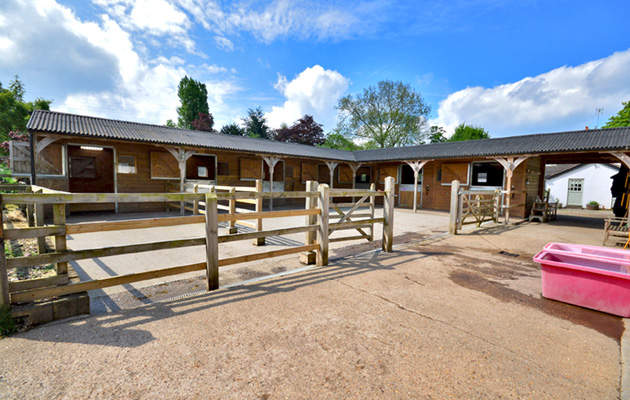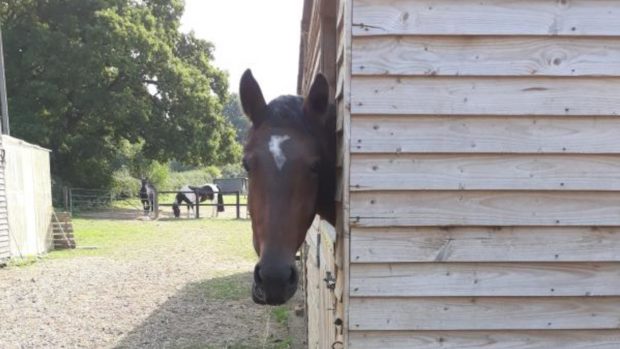Before installing floodlights in your riding arena or yard, you will need to submit a planning application to your local authority — and it’s not always a simple process. The individual case for lighting an arena has to be very well made, says Lottie Butler...
“Lighting is always the most controversial part of the planning permisson process,” says Bruce Clark, director of construction company Elmtree Equestrian.
“It’s usually due to light pollution — people in the countryside will always worry it will look like a football pitch. You really need to do your research, and make sure you get a good design that shows you will be containing the light.”
What does the planning application involve?
“To secure planning permission, you need to submit a full planning application form, a site location that allows the officers to identify where your property is, a layout plan showing exactly where the lights will be positioned around the arena and a cross section of the posts and lights proposed, all of these to suitable scales,” says Linda Wright, co-director of Charles Britton Equestrian Construction.
“We would also offer a light diagram including predicted light spillage outside of the arena, technical information about the sort of light proposed and a Design and Access Statement, in which it is explained why the lights are required and the likely operation times.”
What should I consider before applying?
Environmental factors
Acknowledging environmental factors in your application is important. It does not necessarily mean refusal, but mitigating steps may be necessary. For example, consider whether there are bats or other animals that could be affected by the lighting. “If you have trees and old buildings at the property, it is very likely you will need to have a suitably licenced independent party carry out a bat survey,” advises Linda.
Your neighbours
It is always worth discussing plans with your neighbours. A planning application can only be refused for valid planning reasons, but consulting those near you in advance could help deflect any formal objections. Be sure to let them know how much you will be using the lights.
“In reality, lights are only going to be needed for a very small portion of the year, and for a small number of hours within that time of the year — no one will choose to work under lights if they can possibly avoid it,” says Linda. “Hence, they are not really the intrusion that non-riding neighbours sometimes tend to assume.”
The type of lights
Consider carefully how much light you will need and don’t be tempted to overlight. The level of lighting required very much depends on what activity is intended — there’s one level of lighting for private flat work, another for commercial jumping and everything between.
“Sodium and white metal halide have been very common lights in the past, but LED lighting is improving rapidly,” says Linda. “The initial installation cost is significantly more expensive, but it is much cheaper to run.”
An alternative for those who will only be doing flatwork is to use low-level lights — an option that may please the neighbours. Note that, whatever lighting you opt for, all have to be properly rated, weatherproof fittings.
The style of posts
“The cheapest posts to use are scaffold poles, but these won’t accommodate anything but a simple single lap and can bend in the wind,” says Linda. “Other options include telegraph posts and purpose-made lamp stands, which come in all shapes and sizes.”
All posts must be well secured, which often means concreted into the floor. It’s a job to consider undertaking when you actually build the arena. Similarly, it is also worth thinking about the colour of the posts and trying to make them blend in to the backdrop — “grey against the sky and green against the trees are the most common options,” advises Linda.
Are there any alternatives?
If it is the physical appearance of the lighting that causes a problem, there are varieties of fold-down and wind-down poles. While they might be hard work to put up and down every time you want to ride, they can be a good negotiating point if needed. Similarly, if planning permission is refused, these type of lights can be a good option.
Continued below…
Like this? You might also enjoy reading these:
7 steps to building your dream arena
Lucinda Green: 8 top tips for cross-country schooling in an arena
Helen Gallop, CEO of Summerhouse Equestrian Centre, hires in temporary fold-down lights to light the outdoor dressage and warm-up arenas. “We use temporary lights that don’t require planning permission. The lights can be put up and taken down easily and run on a diesel generator, which is great because it means we’re not relying on a power grid supply — a key consideration when running a busy showground,” she says. “They’re absolutely brilliant. They are very bright and the noise is low enough that it doesn’t bother the horses or the dressage judges.”
Top tip
Be aware that a full survey for planning permission can only be carried out at certain times of the year. If you want lights for next winter, now would be a good time to start the application.



